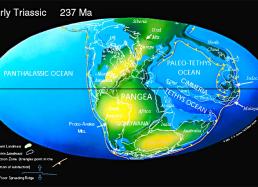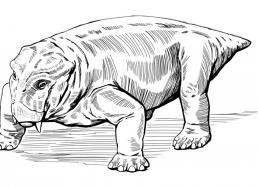Ancient Antarctica
People are often surprised that dinosaurs once lived in Antarctica, because it has such a frozen, inhospitable environment today. But fossils tell us that at one time, Antarctica looked quite different.
Until around 150 million years ago, Antarctica was part of Pangaea—a super-continent that eventually broke up and drifted apart to become the continents we know today. Even back then, Antarctica was still the furthest point south, but it hadn’t yet moved over the pole.
The Sunny South
Its southern location meant that Antarctica experienced several months of round-the-clock darkness and as many months of solid daylight, just as it does today. But it wasn't covered in ice—Earth had no polar ice caps back then.
In fact, most regions of the globe were much hotter and drier than they are today. Antarctica by comparison offered a lush, temperate environment. Rivers ran through its fern-filled meadows, while conifer forests covered its cool mountainsides.
Animals Arrive in Antarctica
The first land animals in Antarctica—amphibians and reptiles—appeared around 250 million years ago, at the beginning of the Triassic period. These animals were some of the very few species to survive on land after the largest mass extinction in Earth’s history—an event which may have been related to global warming resulting from volcanic eruptions in Siberia.
Perhaps these surviving animals slowly migrated to Antarctica in search of unclaimed territory, or perhaps they sought a welcome refuge from rising temperatures. Whatever the reason, populations eventually stayed put long enough that, over time, new species specifically adapted to Antarctica began to evolve.
The Dawn of Antarctic Dinosaurs
Around 200 million years ago, the planet underwent another mass extinction marking the boundary between the Triassic and Jurassic periods. Antarctica’s known Jurassic land vertebrates (backboned animals) appear to be native only to this continent—a sign that climate change or geological events had now isolated local inhabitants from the rest of Pangaea.
Dinosaurs emerged from this extinction event as the dominant form of life during the Jurassic period. Some of the earliest large dinosaurs—such as the one-ton, long-necked, plant eater Glacialisaurus and the giant, crested, meat eater Cryolophosaurus—are found only in Antarctica.




